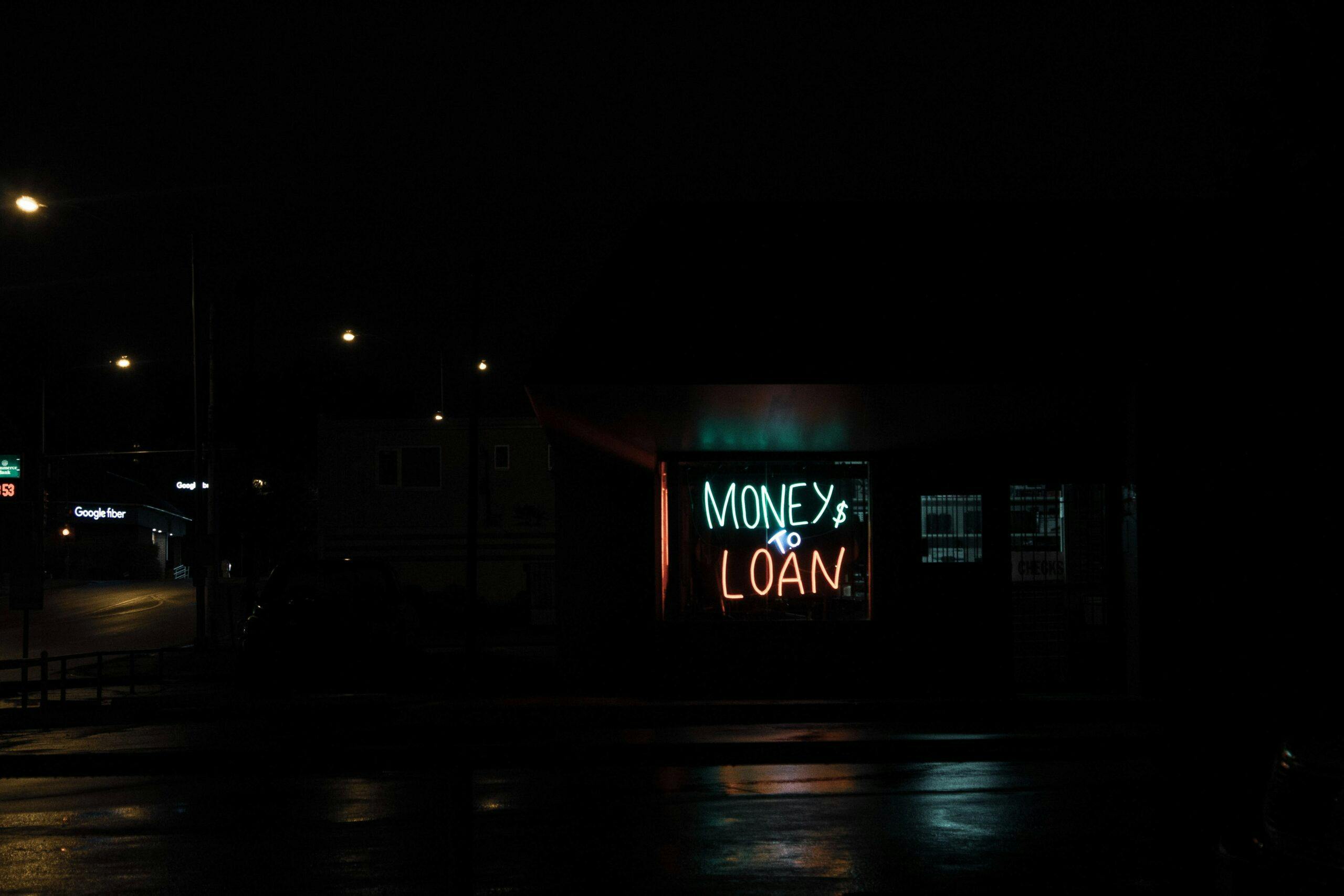Payday Loans In Canada: What You Need To Know
By Heidi Unrau | Published on 20 Aug 2023

Payday loans may seem like a saving grace when your emergency fund is down for the count. Unexpected expenses always seem to happen in rapid succession. But quick cash can turn into debt quicksand if you don’t understand how payday loans work in Canada. We’ll tell you everything you need to know about payday lenders so you can access the money you need without getting caught in that nefarious debt trap.
What is a Payday Loan?
A payday loan is a high-interest loan with a short repayment term, typically within two weeks to 62 days. The amount of the loan depends on your income. Lending limits range between 30-50% of your net monthly income, depending on the province you’re in.
A standard payday loan is about 14 days. That’s because most people get paid from their job on a bi-weekly basis. The idea is that a payday loan should only fill the gap until your next payday. At which point you would pay off the entire loan, its accumulated interest, and applicable fees, all in one shot.
How Do You Get a Payday Loan?
Pretty much all you need to get a payday loan is a heartbeat. Well, actually you need a little more than that. As long as you have a job, a bank account, identification, and a permanent address you can be approved.
Just because you have a job doesn’t mean you can afford a payday loan. But sometimes the qualification requirements are so loose they’ll give it to you anyway. They’ll either give you cash in hand, deposit it directly into your bank account or give you a prepaid card to use. In the case of a prepaid card, those usually come with activation fees.
When it comes time to pay it back, they’ll either automatically debit it from your bank account or cash a post-dated cheque you gave them when the loan originated.
Typically, you are expected to pay back the full amount borrowed, plus the interest, from your next paycheck. Most of the time they will automatically withdraw it right out of your account on your payday.
How Much Do Payday Loans Cost?
The million-dollar question. Pun intended.
Payday lenders charge borrowers an interest rate anywhere from 30-60% of the amount borrowed. And that’s only if you pay it back exactly as agreed, usually within 14 days. That does not take into account any applicable fees or non-sufficient fund charges if your payments bounce.
Sounds simple, right?
Gather ‘round, friends. I’m going to tell you about APR.
APR is a lending term you need to understand and add to your vocabulary immediately. It stands for Annual Percentage Rate. In the case of payday loans, you may be paying 30% on a 14-day loan. But in order to understand the true cost of credit and make an informed decision, you need to understand how a 30% interest rate on a 14-day loan translates into an annual percentage rate.
You take the rate and divide it by the number of days in the repayment period. That will give you the daily rate, the amount of interest you are being charged per day. Then you take that daily rate and multiply it by the number of days in the year.
If you were to take a payday loan of $500 at 30%, and you had 14 days to pay it back, that makes your annual percentage rate 781%!
30% ÷ 14 days = 2.14% Daily Interest Rate
2.14% x 365 days = 781% Annual Interest Rate
If you are being charged 30% on a 14-day loan, that means your daily interest charge is 2.14% of the principal balance. If everything goes according to plan, in 14 days you should be able to pay off the $500 you borrowed plus the accumulated interest, which would be $150. That makes your total payback $650 before you factor in the fees, because there are always fees!
Yeah that’s expensive, but in a pinch, it’s not really that bad, is it?
It is if you’re one of the millions of Canadians who can’t pay it all back in 14 days.
If you were to take a year to pay back that $500, your total payback would end up being $3,914.56.
That means it ended up costing you $3,414.56 of pure interest just to borrow $500 for a year.
Now, payday lenders used to charge you a fee to “renew” or “roll over” your loan to extended the term, allowing you more time to pay it back. So now you owe the principle, the accumulated interest, and the renewal fee.
In most provinces, they can’t do that anymore. Instead, if you can’t afford to pay off the current payday loan and the interest owing, you can take out a new payday loan to pay off the old one.
This is how you descend into payday loan chaos. Now the amount you owe snowballs as you get caught in a cycle of taking out new payday loans to pay off old ones so they don’t get sent to collections. And you’re paying interest rates in the triple digits as you dig yourself deeper and deeper into high-interest debt.
So now you’re wondering, how the heck is that legal?
Are Payday Loan Interest Rates Legal in Canada?
In Canada, it’s legal to charge interest rates as high as 60% annually. But as noted in the above example, the actual annual percentage rate ends up being significantly more. So how on earth can they get away with three-digit interest rates?
In 2007 the Federal Government approved bill C-26 which amended the criminal code exempting payday lenders from the 60% annualized interest rate cap.
The Federal Government granted the provinces the authority to license and regulate payday lenders themselves. In most provinces, payday lenders no longer fall under Federal Law, but the laws and regulations set by the provinces in which they operate.
In order to operate under the purview of provincial legislation, rather than federal, they have to meet some pretty specific criteria:
- Maximum loan term of 62 days or less
- Maximum loan principal of $1,500 or less
- The 60% interest rate cap is only exempt in provinces that have chosen to enact their own laws and regulations
The Canadian Territories do not currently legislate payday lenders, so in areas like The Northwest Territories, Nunavut and The Yukon, payday lenders are still subject to federal law and must abide by the 60% rule.
Quebec has the strictest regulation, prohibiting payday lenders from charging an annualized interest rate over 35%.
There you have it. If your province says to Ottawa, “Thanks for your help, but we’ll take it from here. We’re going to call the shots with our own rules, you can go home now,” then payday lenders can totally get away with these insane 300-700% + interest rates and it’s 100% legal.
How to Pay Off Your Payday Loans
If you have a payday loan, it’s probably because you had very limited credit options. Having said that, it’s definitely in your best interest to see if you qualify for a personal installment loan, also known as a consolidation loan, to pay off your payday loans and any other high-interest debt you’re carrying.
If your own bank said no, you may want to consider an alternative, private, or subprime lender. Their rates will of course be higher than your bank, but much lower than your payday loan. The term will be longer which means your fixed monthly payment will be far more realistic.
Instead of borrowing $500 now and then having to pay the full $500 (plus fees and interest) back in two weeks out of your next paycheck, your installment loan would put you on a repayment term of up to 5 years. The size of your monthly payment will depend on your budget, how much you had to borrow, and the length of your term.
I never like to suggest a subprime lender, but in some cases, they really do serve a need largely neglected by the traditional banking system. So if you are unable to pay off your payday loan within 14 days and your bank won’t help you, this is the next available option to avoid incurring outrageous interest and fees or being sent to collections if you default.
If you are unable to obtain an alternative loan, and you still cannot pay back your payday loan, the next best option is to sell some personal items and slash your budget. Take a look around your home for things in good condition that you can live without. If you need cash now there are several ways to convert your clutter into cash. Post them on the Facebook Marketplace or have a garage sale. It might hurt to be in this position, but making this small sacrifice now will pay you back in dividends by getting out of this debt trap and regaining control of your finances.
You should also call all your other creditors to see if you qualify for a deferment on your car or credit card, for example. Many lenders have payment relief options available for borrowers experiencing financial hardship.
At the same time, also look into canceling or downgrading your monthly services. Cancel all subscriptions like Netflix, Disney, Spotify. Downgrade your tv package or put it on freeze. Some cable providers will let you freeze your account for a month or two so you don’t have to cancel then pay to reconnect. Contacting your creditors and service providers could free up enough cash in your budget this month to help you get out from under that payday loan. It might hurt, but sometimes you have to rip that bandaid off so you can heal.
Of course, for some people, the repeated use of payday loans is really the symptom of a much bigger problem. If you have exhausted every option available to you and cannot get out from under your payday loans, and likely your other debt too, it’s time to consider credit counseling or a debt relief program. While there are pros and cons to this approach, it is the next step in paying down your debt and regaining control of your life without a consumer proposal or declaring bankruptcy.
